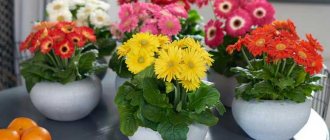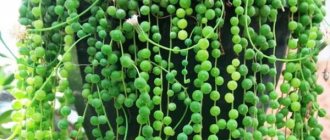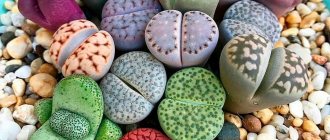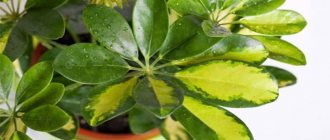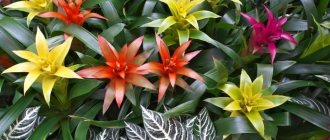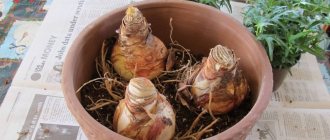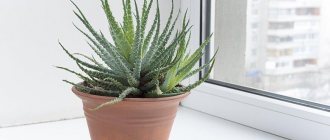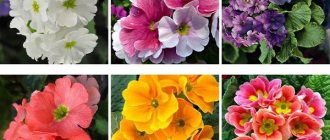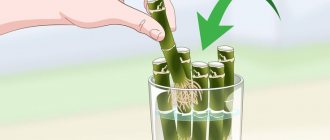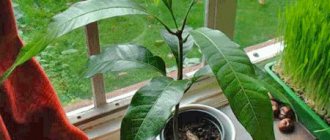/Accessories and decor/Gardening/
Hydrangea has been decorating the gardens of wealthy people with its lush flower caps since the 14th century. Nowadays, plant growers all over the world are trying to establish this noble and beautiful bush. Why not go ahead and plant your own hydrangea garden right on your windowsill?
Fortunately, the selection gave us indoor low hydrangeas with neat flower heads of different colors.
- Under favorable conditions, home hydrangea can bloom from late spring to early autumn.
It is curious that hydrangea acquires one color or another depending on the soil in which it grows: white and cream are obtained in ph-neutral soil, pink and lilac - in alkaline, blue - in acidic. If you want to experiment with these changes, note that white flowers will not change color, but the transition from pink to blue is controlled by adding lime or aluminum to the soil. The aluminum soaks in and makes the blooms blue, while the lime in the soil turns the flowers pink and lilac.
Below, the article describes ways to make your relationship with indoor hydrangeas strong and enjoyable, but for now, a short reminder:
- Hydrangea loves water and does not forgive frequent skipping of watering;
- Capriciously reacts to drafts;
- Tolerates partial shade well;
- In winter, it requires a “vacation” at low temperatures (from +7 to +10), otherwise it may not bloom.
Watering hydrangeas at home
Hydrangea has a less popular name “hydrangea”, which means “barrel of water” and fully reveals its moisture-loving nature.
However, do not forget that we are growing an indoor flower, and advice on watering tall garden bushes from buckets does not suit us. There is no clear schedule for watering indoor plants: you need to monitor how quickly the soil dries out in your home, whether the sun, heating devices, etc. dry it out. Stick to the golden mean: always slightly moist soil, but not stagnant water. Hydrangea, like other flowers, can be destroyed by rotting roots in wet soil.
If you take your hydrangea to a cold winter to stimulate spring flowering, do not forget to water it: rarely, but still sometimes. Let the earth be dry, but not turn to dust.
An important reminder: for irrigation we always use settled water at room temperature. Do not water with ice water from the tap: indoor plants and flowers do not like it.
Temperature
Indoor hydrangea lives up to its name, feeling comfortable at normal temperatures in the apartment (provided there is fresh air). In cold weather, in order to stimulate flowering in the spring, it would be useful for hydrangeas to create conditions reminiscent of the wintering of its garden relatives.
To do this, the pot is placed in a very cool room (basement, glassed-in balcony, veranda, etc.). In this case, watering should be greatly reduced, but not completely canceled: do not forget about the love of hydrangea for water.
Watering and fertilizing
The bush should be watered regularly and abundantly, maintaining relatively high humidity. It is strictly forbidden to allow the earthen ball to dry completely during the active growing season. During the dormant period, the plant is watered carefully. The amount of water should be reduced gradually.
For irrigation use only soft water. Rain or melt water is ideal. If water for irrigation is taken from the tap, it must be left for 24-48 hours. Periodically, you can acidify the water for irrigation with citric acid.
Hydrangea responds well to feeding. Fertilizers are applied every 2 weeks. The first application of nutritional complexes is carried out as soon as small buds appear on the shoots.
In summer, it is recommended to feed hydrangea with a solution of potassium sulfur (30 g), superphosphate (40 g), and ammonium nitrate (30 g). All components are mixed in 10 liters of water.
Bushes are fed in spring and summer. But from the third ten days of August, fertilizing should be stopped.
Trimming and shaping
Sanitary pruning is carried out after the leaves have fallen and the plant has prepared for winter sleep. If this moment is missed, prune the hydrangea in the spring before the growing season. The florist needs to know that the crop lays flowering buds at the very top of the current year's shoot. That is why, when pruning, you should leave last year’s flowering branches on the bush and young ones for future flowering.
It is not advisable to prune new shoots. The old ones should be shortened by 2/3, leaving only a few internodes. If the shoot is very old or damaged, it is removed completely.
The bush is characterized by the formation of a large number of shoots. The gardener should leave only the strongest specimens, only 4-5 branches. Root growth should also be removed.
Wintering the plant
If during the period of active growth of hydrangea it needs warmth (18-24 degrees), then in winter the plant should be kept cool. A plant that has dropped its buds is no longer watered abundantly and is moved to a room with a temperature of 4-9 degrees Celsius.
In the apartment, the pot with the culture is moved to a glazed balcony or to a dry basement. The bushes are trimmed and the root system is covered with spruce branches or artificial material.
Features of care during the flowering period
Improper care can be the reason why your home hydrangea does not bloom. The plant should be provided with plenty of light without direct sun. When grown on a southern windowsill, white burns appear, and when grown in the shade, the crop will refuse to grow and bloom. The optimal placement location is 3 meters from the window on the floor.
The second secret of success lies in ensuring stable temperature indicators. Room temperature is perfect, as long as there are no significant changes or drafts.
At the moment of formation and blossoming of buds, hydrangea is watered daily and abundantly. It is advisable to place bowls of water near the pot, which will help humidify the air. Feed the bush regularly. It is recommended to add manganese to irrigation water to minimize the risk of infections at the most crucial moment.
Advice! Spraying with a gibberellin solution will help speed up the opening of buds and extend the flowering period.
Growing hydrangea in a pot at home, although not easy, is very interesting. The bushes will thank you for your attention with beautiful and lush flowering.
Trimming
The pruning procedure is mandatory in order to maintain the attractive appearance of the plant. For this procedure you will need a well-sharpened knife or pruning shears. The cut should be sharp and even.
During pruning, weak leaves and stems that have begun to dry out or rot are removed. It is also necessary to trim the top of the plant in order to form a more luxuriant crown.
It is ideal to prune twice a year. This is in the fall, when the flowering period has passed, you need to remove weakened leaves and in the spring, when you need to remove weakened shoots.
During the flowering period, the pruning procedure stops. It begins when the first faded flowers or leaves appear. They are the ones that need to be removed so that the plants do not rot.
The benefits of indoor hydrangea
Hydrangea foliage can purify the air, and flowers can delight the eye, but followers of ancient philosophies attribute a number of other, no less useful properties to the elegant plant. Being widespread in East Asian countries, according to the teachings of Feng Shui, hydrangea is considered a very valuable house flower. This plant has a calm and positive energy that can fill a home with a feeling of peace. A hydrangea bush will help smooth out conflict situations and promote mutual understanding. Admiring hydrangea helps you relax after a hard day or a stressful situation, regain peace of mind, drive away depressing thoughts and improve your mood.
It is assumed that the hydrangea bush can not only improve the home environment, but also serve as an indicator of the energy of the home. The better it is, the more magnificent and longer the bush will bloom.
Is it possible to grow hydrangea at home in a pot?
Hydrangea is planted not only in open ground, but also grown in a pot as a houseplant .
There are many varieties of this plant designed specifically for growing and keeping in an apartment. At home it is capable of blooming with large flowers of different colors .
To preserve its maximum decorativeness and good flowering, it is important to follow some recommendations for planting and care.
There are many varieties of this plant designed specifically for growing and keeping in an apartment.
The main problems when growing in a pot
By the appearance of the bush you can always determine what kind of problem is tormenting it at the moment. So, when leaves dry out, the cause is insufficient watering; excessive dry air can cause the same troubles to delicate and sensitive foliage.
If possible, pots with hydrangea are placed close to aquariums or other containers with water. Regular (twice a day) spraying of foliage helps a lot. Watering in each case is selected individually, and in rooms with very dry air they even use a second tray into which water is poured. This creates evaporation around the flower, to which the leaves always respond favorably.
Yellowing foliage is another common problem. It occurs due to insufficient soil acidity. Watering with water acidified with lemon juice helps. The proportion is small - only 5 drops of fresh juice per 1 liter of water.
Pests and diseases of indoor hydrangea
The most common diseases and pests found indoors are:
- Aphids and spider mites. These parasites are companions of excessive dry air. Wiping the foliage with a weak soap solution helps, and in particularly serious cases, spraying with the addition of Actellik.
- Gray rot. This disease occurs when there is excess humidity. Treatment with Bordeaux mixture is used as treatment.
- Yellowing of leaves can occur due to insufficient watering or too alkaline soil reaction. Irrigation with the addition of iron sulfate (10 g per 1 liter of water), as well as iron sulfate (2 g per 1 liter of water), will help solve this problem.
- Drying leaf tips indicate a lack of moisture and/or nutrients. Over time, if there is no attention, the plant will begin to shed buds and then leaves. You should fertilize with complex mineral fertilizer as an emergency aid.
- The lack of flowering directly indicates that the bush was not provided with a period of rest in winter. In this case, this is what they do: let them rest all summer, and prune them in the fall to prepare the hydrangea for wintering. After a year of rest, the bush will delight you with especially lush flowering.
- Brown spots on leaves are a symptom of moisture deficiency, which is why their appearance is monitored so closely.
- Light spots on the foliage indicate sunburn. It is urgent to change the position of the pot, moving it away from the window.
- Slow growth and poor flowering indicate a lack of fertilizer. It is recommended to fertilize immediately.
Watering and fertilizing mode
Without regular, sufficient watering and air humidification, it will not be possible to grow the desired beauty. Abundant flowering constantly needs to replenish water supplies, especially in summer, when the air is dry, it is necessary to constantly check the condition of the soil in the flowerpot: as soon as the top layer is dried, it is necessary to water.
Slightly wilted leaves signal the need to spray the plant, resulting in a favorable microclimate for the plant. Spraying is also a good preventative way to protect against spider mite attacks.
Water for irrigation and spraying should be settled or boiled, slightly warm. Flower growers living in relatively ecologically clean areas can collect rainwater and store it. With the onset of autumn, the frequency and volume of watering are reduced; the closer winter and the dormant period are, the less often the hydrangea needs to be watered. To maintain the acidity of the soil, water once a month with the addition of 5 drops of lemon juice per liter.
They begin to feed hydrangea when it, transplanted into new soil in the spring, begins to grow, that is, a month after transplantation (the period of formation of new shoots). Complex mineral fertilizers for flowering indoor plants are best suited so that they contain a full range of essential macro and microelements.
Top dressing
Hydrangea should be fed in the warm season. During the winter dormant period, fertilizers are not needed.
- Acceptable feeding schedule: from March until October once every two weeks. The standard dosage should be halved.
To fertilize indoor hydrangeas, fertilizers for garden hydrangeas or rhododendrons are suitable, but in a reduced dosage. They do not need organic fertilizers.
- If you want to grow blue hydrangea, then you need to maintain the correct acidity of the soil by using special fertilizers for blue hydrangeas containing aluminum. The dosage and frequency of use of such fertilizers are indicated by the manufacturers. Remember that blue colors can only be achieved with “colored” hydrangeas, not white ones.
Ways to propagate hydrangea at home
Hydrangea at home will delight its owner with long and lush annual flowering only if the plant is properly cared for. To do this, it is important to provide proper care, which consists of planting, watering, fertilizing, and proper lighting.
There are 3 ways to grow home hydrangea, which will turn green and delight you with a riot of colors throughout its entire life (3-4 years). You can grow an indoor flower in the following ways:
- Germination from seeds. When choosing this method of growing hydrangea, the seeds of a flowering plant are laid on the surface of the soil, lightly sprinkled with soil on top, then cover the pot with glass or film. Once a day for 30-40 minutes, the film or glass must be removed from the surface of the earth to allow air to enter the soil. After the first seedlings appear, the glass must be removed, wait for the first two or three leaves to form and plant the hydrangea in pots with a diameter of 7 cm.
- Dividing the bush. This is another good way to propagate homemade hydrangea; it is the simplest and most painless for the plant. The division of the bush is carried out in the spring; for this, it is removed from the pot and divided into parts so that the new plant has a root and a growing point. Before planting the bush, the roots are shortened, the plants are watered and the soil layer is covered with peat.
- Cuttings. Experienced gardeners also use this option as cuttings. How to propagate hydrangea at home using cuttings? It should be carried out in January-February to create a multi-stemmed bush. If you propagate hydrangea at home using cuttings in the spring, this will lead to the formation of a single-stem bush. Cuttings 7-9 cm long are cut from the root shoots; each of them must have at least three internodes. After pruning, the cuttings must be treated with a root stimulator, applying it to the cut, and then they take root in a substrate of peat and sand. Plants should be kept indoors at a temperature of +18-+20 degrees. Complete rooting of plants occurs within 3-4 weeks. They can be planted as early as April, and dividing the bush is recommended in the spring when replanting hydrangeas.
By choosing one of the ways to grow hydrangea at home, you can almost always have a flowering plant on your windowsill. To plant hydrangea at home, you can make an earthen mixture of turf and coniferous soil, peat, crushed pine bark and river sand in the ratios 2: 1: 1: 0.5: 0.5.
What varieties are grown at home?
Since hydrangea is a rather large and spreading shrub, it is difficult to decide on the choice of variety for home cultivation. After all, planting a shrub in an ordinary pot for indoor plants is difficult, due to the initially large and powerful root system, not every plant will grow at home.
Therefore, experienced flower growers, as well as floristry specialists, list hydrangea varieties acceptable for home cultivation:
Hydrangea largeleaf - Japanese and magic amethyst varieties. These two varieties do well at home when grown in small pots. If you prefer to get a larger flower, you can use larger floor flowerpots. They should not be confused with ordinary garden varieties - they are intended for growing in a garden plot, in the open air.
Hydrangea paniculata - all varieties. The presented type of plant will feel great in a pot on the windowsill. Its root system is less picky about volumes, so the shrub cuttings can be planted in a small flowerpot, which will lead to the growth of a small and neat flower.
Hydrangea tree - all varieties. But this type of plant, although suitable for growing at home on a windowsill, nevertheless entails difficulties in care. The capricious appearance leads to the fact that a novice gardener will have to create all the comfortable conditions for the normal growth of the shrub. Even small mistakes can subsequently lead to disastrous results.
When choosing a hydrangea variety to grow at home, give preference to the initially small size, which can be achieved in garden planting conditions.
As a rule, their root system will feel more “calm” when grown at home in small pots and flowerpots.
Hydrangea: varieties, planting and care, video:
Hydrangea: varieties, planting and care
Planting hydrangea and care at home
Hydrangea is replanted for the first time when the flower is brought from the store. You need to take a wide pot, a little larger than the previous size, do not forget to add a drainage layer, then a small layer of soil. The transplant is carried out in the following sequence:
- Cover the table with film or paper, place a flowerpot with a flower on it, and pass a knife between the wall of the flowerpot and a lump of earth to better separate it.
- The flowerpot is tilted, the flower is taken by the base and carefully removed. Carefully inspect the roots and trim if necessary.
- Move the flower to a new pot, fill it with soil exactly to the level to which the flower was buried before replanting, so that the stem does not begin to rot.
- After transplantation, the plant is sprayed with warm water. Watering can begin the next day.
- To prevent moisture from evaporating quickly, some gardeners sprinkle the soil in the flowerpot with peat mulch.
- Watering can begin the next day. To prevent moisture from evaporating quickly, some gardeners sprinkle the soil in the flowerpot with peat mulch.
Wanting to create optimal conditions for the plant to grow well, subsequent transplants are carried out every year in the spring, when the dormant period ends, each time increasing the size of the pot. Thus, the measles system is provided with additional space for development.
The size of the pot is increased gradually, otherwise, planted immediately in a spacious pot, the hydrangea will begin to fatten and direct all its energy to the development of foliage to the detriment of flowering. The root system of a flower develops horizontally; when choosing a flowerpot, pay attention to its width.
Planting and caring for hydrangea
Caring for indoor hydrangea at home is easy. It is enough to follow certain rules of care:
- choose a comfortable place;
- protect from direct sunlight;
- maintain a comfortable temperature;
- avoid sudden changes in temperature and drafts.
After flowering, the plant enters a dormant period. At this time, it should be moved to a cool, dark place where the temperature will be about 7-10 degrees. There it should be left until the buds begin to appear. This happens around February. After this, the hydrangea is returned to its usual conditions.
After such a rest in winter, the flower is well able to restore its strength, which it spent during flowering. If this is not done, then the next flowering will occur only after a year.
Features of watering
Growing hydrangea at home also requires regular watering. It should be done especially often in the summer. In spring and autumn, moderate watering is needed, and in winter, when the dormant period begins, the plant needs to be watered very little, purely symbolically. It is better to water the hydrangea with filtered or settled water. Once a month, you can water the plant with water to which a few drops of lemon juice have been added.
In addition to abundant watering, high air humidity should be maintained. To do this, you can spray it more often with a spray bottle. It is also better not to place it near heating appliances.
Feeding and pruning
When growing indoor hydrangea, care also comes down to regular fertilization. It is especially important to feed the flower during the period of active growth. The plant should be fertilized once every two weeks.
To do this, you can use special complex fertilizers that are intended for flowering types of plants. These include rhododendrons, azaleas, and heathers. They begin to fertilize the flower in February, when new buds and shoots begin to form. Hydrangea is not fed during the dormant period when the plant is resting.
Also, flower care requires pruning. This is usually done twice a year - in the autumn and after flowering has completed. Shoots that look weaker are removed to the very root, while others need to be shortened only by half. In spring, pruning of the flower is required in order to remove weak shoots from the plant that are too elongated.
Flower transplant
In addition, hydrangeas require home care in the form of an annual transplant. As an indoor flower, it can live for 3-4 years. After this, you need to plant a new plant. The soil is required to be fertile, which will have the following composition: three parts turf and leaf soil and one part sand.
The pot chosen for it is wide, but not too deep. The fact is that it has a horizontal type of root system and the roots do not go deep, but grow wide. When transplanting, the transshipment method is used. It helps make the process less stressful.
A drainage layer should be placed at the bottom of the container. Once planting is complete, all empty spaces should be filled with substrate, but the root collar should be slightly above the soil surface. After the flower is planted and watered, the surface of the soil should be mulched. You can use peat mulch for this. This way, moisture from the surface will not evaporate too quickly.
Growing seedlings
In order for the fragile hydrangea seedlings to quickly strengthen and turn into full-fledged seedlings, they need to be provided with competent and delicate care. It includes the following conditions:
- regular watering and soil moisture;
- optimal lighting;
- comfortable temperature conditions;
- feeding;
- hardening;
- picks.
Watering and moistening
The soil in containers with hydrangea seedlings is regularly moistened, preventing the top soil layer from drying out. Additionally, young plants are periodically sprayed with water from a spray bottle. Spraying will not only replenish the plants' moisture needs, but will also help maintain optimal air humidity. At the same time, water should not be allowed to stagnate in the container with sprouts. Excess water in the tray with seedlings must be drained after each watering. Water the seedlings only with soft, settled water at room temperature. The best time for watering is in the morning.
Lighting
For full development and growth, young hydrangeas require abundant, but soft and diffused lighting. Containers with seedlings are best placed on window sills in the eastern, western, southeastern or southwestern part of the house. It is not recommended to place boxes with hydrangea seedlings in places where the plants will be exposed to direct sunlight for a significant part of the day. If your hydrangea bushes look weak, drooping or wilted at the end of the day, this may indicate they are overheating. In this case, the pots with seedlings should be moved to light partial shade.
Temperature
Hydrangea seedlings sprouted from seeds are sensitive to changes in air temperature. In order for young plants to feel good, the air temperature in the room must be maintained at +15... +20° C
It is important to consider that a sharp drop in temperature for unhardened seedlings can be disastrous, as can exposure to drafts. Both young hydrangea seedlings and adult plants should be protected from drafts
Feeding
Before transplanting into open ground, it is recommended to periodically feed hydrangea seedlings. Fertilizing is carried out during the period of growth and development of green mass, using complete complex fertilizers (“Aelita-Flower”, “Fertika Lux”, “For hydrangeas and rhododendrons” from Pokon). It is advisable to feed young plants 1-2 times a month.
Hardening
Before planting in open ground, hydrangea seedlings should be hardened off. This procedure will increase the endurance of young plants and increase their resistance to low temperatures. The hardening process is carried out gradually. To do this, containers with young plants are placed on the balcony for several hours every day. Over time, the length of time the seedlings stay on the balcony increases, removing them only at night.
Picks
Growing hydrangea seedlings from seeds requires 2 pickings. These procedures are necessary for the full development of young plants, the active growth of their green mass and root growth. In the absence of picks, the seedlings will begin to stretch upward, weaken, oppress and shade each other.
The first picking is carried out after the seedlings have 2 developed cotyledon leaves. At this stage, the plants are planted in containers at a distance of 10-12 centimeters from each other. The second picking is carried out at the end of spring. During this period, young bushes begin to actively grow green mass, requiring a sufficient amount of free space. At this stage, hydrangea seedlings are planted in separate pots.
Difficulties and problems when growing hydrangeas
If the growing conditions do not meet the requirements, the plant becomes sick. This leads to the plant drying out, yellowing and falling leaves. What could be the reason?
Leaf chlorosis can be caused by a lack of iron, which is destroyed in alkaline soil. If the leaves begin to turn yellow, once a week the flower should be watered with a solution of iron sulfate, a solution of iron in chelated form, or other fertilizers containing iron.
You can increase the acidity of the soil by adding sulfur, peat, pine bark to the soil; you can reduce the acidity by adding chalk, lime, and dolomite flour.
Hydrangea foliage may turn yellow due to direct sunlight on the plant. When such a sign appears, it needs to be moved to a place where the sun does not hit the leaves.
Forgetfulness of the gardener to water or spray the plant in time leads to the fact that the hydrangea begins to dry out: first the tips of the stems dry out, then the leaves, and they begin to fall off. Along with regular watering, it is imperative to moisten the flower itself and the air around it.
If a flower has not had a full winter dormant period, it may not bloom in the spring because it has not regained its strength after the previous flowering. For approximately three months, the hydrangea should be placed in a cool room, watering should be reduced, and fertilizing should be stopped.
Some varieties do not shed leaves, but this does not mean that the flower does not need rest. The plant can be prepared for winter by force:
- Shorten strong shoots by half, cut weak ones at the root.
- Remove leaves from stems.
Take the hydrangea to a suitable dark place until February, until it begins to emerge from dormancy. Then it needs to be moved to a bright room with a temperature of up to 20ºC. If these rules are followed, hydrangea will bloom annually and profusely.
Pests and diseases of hydrangea
If the humidity is too high, hydrangea is affected by gray rot, which can be dealt with by treating the plant with Bordeaux mixture, and downy mildew, which is destroyed by copper-containing preparations or fungicides. If there is insufficient moisture, hydrangeas are harmed by spider mites and aphids, which are destroyed by double treating the plant with a soap solution or actellik at weekly intervals.
Hydrangea turns yellow
Most often, the cause of discoloration of hydrangea leaves is a violation of the rules of care - insufficient watering of the plant, lack of nitrogen in the soil, or a disease such as chlorosis, which occurs due to the fact that the soil in the pot is too alkaline. Correct your mistakes and the plant will get better.
Hydrangea is drying
Sometimes this happens simply because you forget to water and spray it, sometimes because of a lack of nutrients in the soil or because the roots of the plant were injured during an awkward transplant, that is, in any case, due to a violation you rules for caring for a flower. Change your attitude to the rules: if you strictly follow them, which in itself is not difficult, you will not have problems with either hydrangea or any other plant.
Hydrangea falls
As a rule, falling is the next stage after the leaves dry out. The plant needs not just abundant watering, but regular moistening of both the soil and the air, so water the soil and spray the hydrangea leaves as the need arises.
Hydrangea doesn't bloom
This can happen if the hydrangea did not rest in winter - it used up its energy on flowering, and it was not possible for it to accumulate new ones on the windowsill near the hot radiator, and this is not its fault. She needs complete rest for 70-80 days in a cold, dark room, even if she does not look like an exhausted plant - the leaves have not fallen or dried out. Find a room or basement suitable for the dormant period, remove all the leaves, shorten the strong shoots by half, cut off the weak shoots at the root, take the pot with the plant to a suitable room and lay it on its side. This needs to be done in December, so that in February you can bring the hydrangea back to life. By observing this ritual annually, you can be sure that the hydrangea will definitely bloom in due time.
Reproduction methods
The most reliable way to propagate hydrangea at home is by cuttings, and the best time for this is January–February. By next autumn, shortened cuttings are capable of forming a multi-stemmed bush of 3-4 shoots. If you are late with cuttings and carry it out in March-April, the result is a single-stem plant.
Cuttings from basal shoots 7–8 cm long are cut, and up to three internodes should be located on the segment. The leaves located on the lower part of the cuttings should be removed, and the upper parts of the cuttings should be shortened by a third or half. The lower cut of the cuttings is treated with a root stimulator and they are planted in a peat-sand substrate. The cuttings should be kept in the light, the temperature should be +18–20 degrees, and the air humidity should be 75–80%. To create such conditions, they are covered with glass jars, which must be removed every day for ventilation. Be sure to moisten the soil. The cuttings take root in 3–4 weeks, after which they should be planted in separate pots with a diameter of 7–9 cm.
Seed method
The soil that will be used for planting seeds should consist of turf, leaf soil and humus, taken in equal parts. Peat and sand are additionally added to it in half. Sow small seeds at the end of winter in a small container on the surface of the substrate, without embedding them in the soil, and cover them with glass. They should be ventilated every day and moistened as necessary, and the soil should always be slightly moist. When seedlings appear, the glass is removed, and when two true leaves grow, the seedlings are transplanted into deeper containers. When they get stronger, they are planted in pots with a diameter of 7 cm.
Dividing the bush
This method of propagating hydrangea is considered the simplest, but it requires great care and a certain dexterity. During annual replanting, the bush should be divided so that all divisions have growth points and the required number of roots
Before planting, both the shoots and the roots of the divisions need to be shortened, after which they are planted in separate pots and watered, and the surface of the soil is mulched with peat. If you divide the bush in the spring, then by autumn the divisions will take root well.
Reproduction
Homemade hydrangea can be propagated by cuttings, layering, as well as dividing the bush and seeds. The latter method is ineffective, therefore it is used mainly by breeders to create hybrid varieties.
The easiest option is propagation by cuttings. To do this in the spring, you need to cut the shoots into small pieces of 8-9 cm so that there are 2-3 nodes on each. The cuttings are kept in a solution of “Kornevin” or any other root formation stimulator, then placed in the ground to form a root system.
A similar method is propagation by layering. In both cases, expanded clay, large pebbles, broken brick or any other drainage material should be poured onto the bottom of the planting container, and then covered with a substrate consisting of a soil mixture for ornamental plants and soil taken from under the pine tree (1 to 1) .
Layers and cuttings are placed in a substrate, watered thoroughly and placed in a shaded place. It is advisable to build a small greenhouse.
The growth of the root system begins in approximately 3-4 weeks. The easiest method of propagating hydrangeas is to divide the bush. It will require accuracy and certain planting skills.
An adult bush is divided into 2-4 parts so that each contains shoots with living buds and a sufficient number of roots. The roots must be shortened, placed in the ground, watered, covered with a greenhouse and left for active rooting. Plants tolerate root division best in the spring.
The following video will tell you how to care for indoor hydrangea.
Store-bought or homemade
Soil can be purchased in specialized stores. The choice today is huge. Many tropical plants prefer slightly acidic peat-based soil. Therefore, you can take soil for Saintpaulia, azalea, and begonia. The consultant will probably select a dozen more basic formulations for you.
But you can make the soil mixture yourself. To do this, you need to take one part each of leaf and turf soil, peat and river sand. There is no need to add wood ash; it reduces the acidity of the soil. The substrate should be light and nutritious, breathable. After watering, it is advisable to loosen the soil in the pot. Spread sphagnum moss on its surface. It will maintain soil moisture and prevent it from drying out.
Various hydrogels can be added to the substrate for adult plants. These are modern additives that allow you to maintain the required level of humidity in any weather. But do not forget that in small pots this slightly depletes the soil. That is, the plant may lack nutrients.
Temperature is the key to success
This applies to any flower. If it likes the climatic conditions, it will grow and develop luxuriantly. Too cold or, on the contrary, too hot - the bush will sit limp, boring, and maybe even die. What conditions need to be created for home hydrangea? Growing and care begins with basic knowledge of the gardener.
So, this plant prefers moderate heat. Hydrangea develops remarkably at +15…+22 degrees. It tolerates higher temperatures, but the heat does not affect the flower very well. It should be taken into account that in the garden the plant is blown by a breeze, and by the evening the heat still subsides. During the heating season, a stable temperature of more than 25 degrees can be maintained at home. But this plant is not very fond of. When choosing a place, try to give her the coolest place. But without drafts, hydrangea cannot tolerate them at all.
Growing large-leaved hydrangea in a pot: everything you need to know
Large-leaved hydrangea is a real beauty. Juicy green leaves and large caps of bright inflorescences make it a real decoration of the garden, but there is one “but”: the heat-loving beauty does not always winter safely in the open ground. Very often, even with shelter, the shoots of the bush freeze and thus deprive gardeners of the pleasure of admiring the flowering next season, which is the main advantage of the plant. However, not everything is so sad and there is a good way to avoid such a situation and preserve flower buds - to grow hydrangea as a potted crop. Of course, this changes its care a little, but, in general, it won’t cause much trouble; moreover, it’s much easier to care for a compact bush. But what exactly needs to be done is what we’ll talk about today.
Types and varieties of indoor hydrangea
For all home hydrangeas, the general leaf shape is typical - ovoid, wide, juicy green. The inflorescences of a white, pink or blue hue are scutes reaching a diameter of up to 15-20 cm. Each flower can be 3 cm in diameter. Only those inflorescences that are located in the center of the scute are capable of forming an ovary with seeds, and the edge ones are sterile. The aroma is pleasant, similar to jasmine.
All varieties in stores selling well-formed bushes or planting material are conventionally divided by shade, since by creating certain conditions for the plant, you can achieve a change in the shade of its flowers.
Hydrangea in a pot
- Madame Emile Mouillere is a French variety bred in 1909. The spherical inflorescences are initially boiling white, and then turn slightly pink. Flower buds are laid on shoots for 2 years. Loves partial shade.
- Soeur Therese is a large bush that grows up to 120 cm in height. It requires a special choice of location, as it suffers from burns in the hot sun and stops blooming in strong shade. It blooms in small white inflorescences with pointed ends of the petals.
- Goliath. The bush grows up to 70 cm in height, and the diameter of the inflorescences reaches 30 cm. The edges of the sepals are heavily indented. Among other varieties, this one is distinguished by its rather late flowering.
- Hamburg forms a strong spherical bush up to 120 cm high with inflorescences up to 25 cm in diameter. It requires annual formative pruning, but it is important to consider that flower buds are formed only on last year’s shoots.
- Airlie Blue blooms from June to September. A compact bush on a windowsill grows up to 80 cm in height. Large inflorescences do not form seeds, so the variety is propagated only by layering, dividing the rhizome and cuttings. Unlike many other varieties, this one forms flower buds on all shoots.
- Ramars Mars is one of the most popular varieties, distinguished by its lush bright blue inflorescences up to 20 cm in diameter. Requires classic care, including pruning.
The purchased flower should be planted in a new pot a couple of days after purchase. If the planting material is seeds, then sowing is carried out in mid-April, when the sun is bright enough. Propagation by cuttings is carried out in the summer, choosing for this young branches with 3-4 buds.
Types of home hydrangea
large-leaved hydrangea (Hydrangea macrophylla) , or garden hydrangea, and its numerous varieties, of which there are already more than 100 today, are grown in pots
Varieties of white and cream-colored inflorescences:
- M-me E. Mouillere - the diameter of the inflorescences is 18-20 cm, the flowers are from 2 to 6 cm, the leaves of this hydrangea are somewhat narrower than those of other varieties;
- Souer Tharese - flowers of regular shape, inflorescence diameter 15-17 cm, the bush itself is short - 35-40 cm, early flowering variety.
Pink varieties:
- Goliath - large inflorescences of a deep pink hue with a diameter of up to 30 cm, the edges of the sepals are deeply cut, the bush is 60-70 cm high, blooms late;
- Hamburg - compact flowers 4-5 cm in diameter, pink, collected in an inflorescence with a diameter of 16-18 cm, bush height 35-40 cm;
- Europe - a profusely flowering variety 40-50 cm tall with large flowers up to 6 cm in diameter, the inflorescence is 20-25 cm across.
Red varieties:
- Red sensation - burgundy-red inflorescences that become violet-burgundy when iron salts or aluminum sulfate are added to the soil;
- Prima - the diameter of the inflorescences is 15-18 cm, but the flowers themselves are small - no more than 3.5 cm in diameter, the stem height is 20-25 cm, a medium-flowering variety.
Blue varieties:
- Early Blue - bright blue inflorescences, tall variety;
- Ramars Mars is a compact variety, inflorescences up to 20 cm in diameter, over time the ends of the petals turn green.
Methods for propagating hydrangea
Homemade hydrangea is short-lived; after 3-4 years you have to plant a new plant, so flower growers want to learn how to propagate hydrangea at home. There are several methods, the most reliable one is most often used - cuttings, and very rarely used - seed.
Cuttings
February is the best time for cuttings; by autumn, the cuttings will form a bush with several shoots, capable of blooming next year. With later rooting, only a single-stemmed bush will form.
Planting material is taken from the root shoots; young cuttings should be 8-9 cm long with two or three pairs of leaves; they should be cut from the mother bush with a sharp knife. Next, the lower pairs of leaves are removed, the upper ones, if they are large, are shortened by half, if small - by a third.
The lower part of the cuttings is treated with a means that stimulates root formation and planted in small cups filled with a mixture of peat and sand.
Water with a warm, weak solution of potassium permanganate, cover with a jar to create increased humidity, place in light at a temperature of 18-20°C, remove the jar daily to allow ventilation. When planting so early, you should not shade the cuttings, but if cuttings are done in March, young plants need to be protected from bright sun.
After two to three weeks, the cuttings will take root; they can be planted in small ceramic pots with a hole at the bottom and a layer of drainage.
Seeds
This method is used only when there is a need to breed an extremely rare variety, and there is no other possibility. The soil is prepared very lightly, from humus, leaf and turf soil with the addition of a small amount of sand. The mixture is poured into bowls, slightly moistened with a spray bottle, small seeds are sown on top, covered with glass, and placed in the light. Ventilate every day and make sure the substrate is always slightly moist.
When shoots appear, the glass is removed. Allow the seedlings to grow until two true leaves are formed and plant them in containers with the same soil composition. The grown, stronger seedlings once again dive into separate cups.
Proper transplantation of hydrangea
Every spring, the plant is replanted if it is still young and has just taken root. It should be carried out as the leaves swell and appear.
As soon as the shrub produces all its leaves, replanting should no longer be carried out.
More mature plants are replanted no more than once every two years. Hydrangea is also replanted in the spring, but the goal lies in the usual change of soil.
Transplanting young plants deserves special attention. Each time you should choose a pot with a larger diameter, since the root system grows to the sides, and not to the depth.
Soil for planting can be purchased ready-made at a specialized store or prepared independently at home. It should be noted that the choice of soil should be approached carefully according to the type of shrub being planted.
You can also resort to a universal composition, where peat, deciduous soil, humus and sand are mixed in equal quantities. Such an acidic environment promotes hydrangea flowering with buds with more saturated colors.
When planting, be extremely careful - do not fill the root collar with soil. She needs constant access to oxygen for normal and comfortable growth and flowering.
Large-leaved hydrangea: care, shelter for the winter
